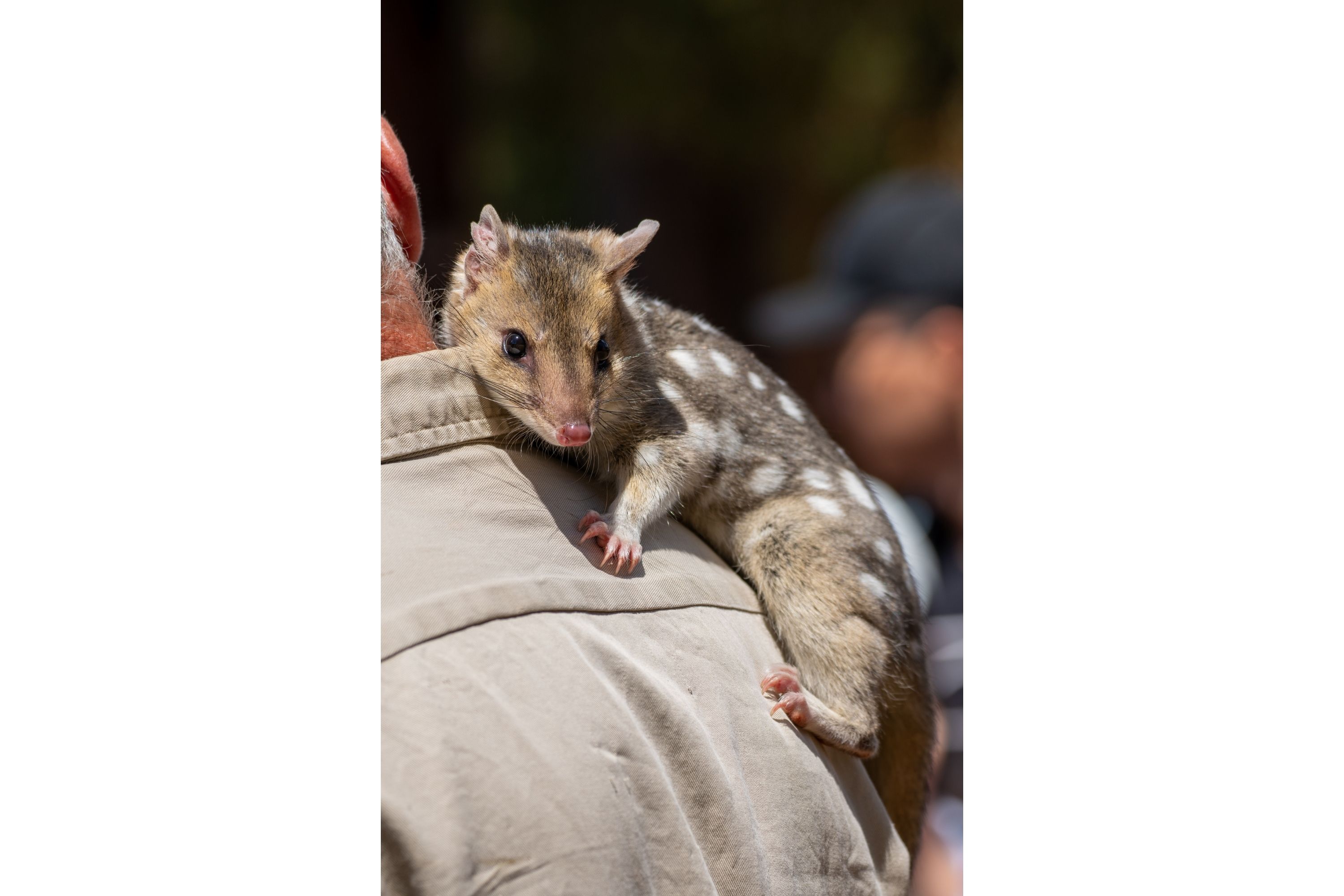Eastern quoll
(Dasyurus viverrinus)

Description
The eastern quoll (Dasyurus viverrinus), found only in Australia, and formerly known as the eastern native cat, is a medium-sized carnivorous dasyurid marsupial. They are widespread and even locally common in Tasmania. They have been considered extinct on the mainland since the 1960s, however have been reintroduced back into fenced sanctuaries in 2016, and more recently into the wild in March 2018. It is one of six extant species of quolls. Eastern quolls are generally about the size of a small domestic cat, with adult males measuring 53 to 66 cm (21 to 26 in) in total length, including the 20 to 28 cm (7.9 to 11.0 in) tail, and having an average weight of 1.1 kg (2.4 lb). Females are significantly smaller, measuring 48 to 58 cm (19 to 23 in), including a 17 to 24 cm (6.7 to 9.4 in) tail, and weighing around 0.7 kg (1.5 lb). They have a tapering snout, short legs, and erect ears. They can be distinguished from all other species of quoll by the presence of only four toes, rather than five, on the hind feet, lacking the hallux. They have a thick coat covered by white spots, that can be either light fawn or near black, with off-white underparts stretching from the chin to the underside of the tail. Both fawn and black individuals can be born in the same litter, although in surviving populations the former represent about three times more common than the latter. The spots are 5 to 20 mm (0.20 to 0.79 in) in diameter, and are found across the upper body and flanks, from the top of the head to the rump, but, unlike some other species of quoll, do not extend onto the tail. Females possess a relatively shallow fur-lined pouch formed by lateral folds of skin. The pouch becomes enlarged during the breeding season, and includes six to eight teats, which only become elongated and functional if one of the young attaches to them, regressing again after they leave the pouch. As with all quolls, the penis of the male bears an unusual fleshy appendage. The large intestine of eastern quolls is relatively simple, having no caecum, and not being divided into a colon and rectum. An unusual feature of eastern quolls is the presence of an opening connecting the ventricles of the heart in newborn young, in addition to that connecting the atria found in all marsupials. Both openings close after a few days.
Taxonomic tree:







